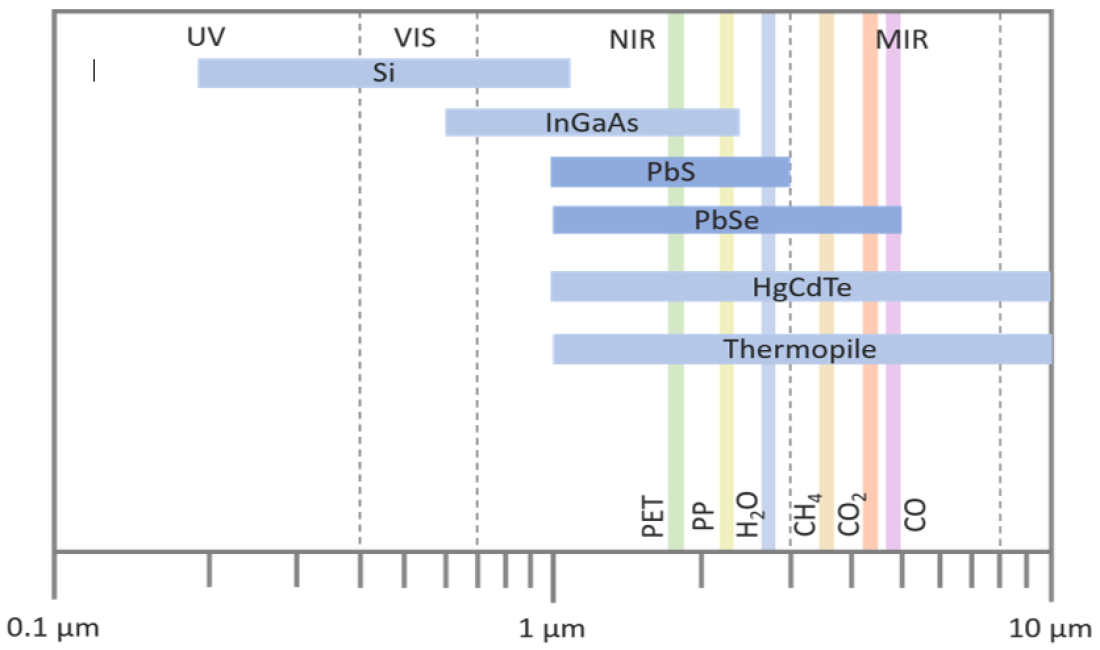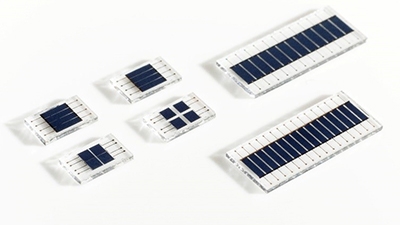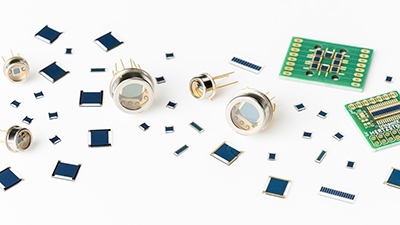Measuring infrared radiation using trinamiX lead sulfide and lead selenide detectors
Accurate detection and classification of substances and materials is critical for today’s ever-growing needs related to both automation and increased safety. Optical sensing technologies are at the forefront when it comes to such applications because of their fast, robust and contactless measuring abilities
Lead sulfide (PbS) and lead selenide (PbSe) infrared detectors are especially attractive because of their wide useful wavelength range. This becomes apparent by looking at the wavelength coverage of the most common optical detector families, together with the positions of important spectral features regarding humidity, plastic materials, and gases. Compared to other detector families, in particular InGaAs photodiodes, the spectral coverage of PbS and PbSe allows for a much wider field of possible applications.
Lead sulfide is excellent for detecting O-H and C-H bonds as these bonds have absorptions characteristics that are very well pronounced in the NIR range. This allows the afore-mentioned detection and classification of materials and substances such as textiles, polymers, fatty acids or alcohols.
Being able to detect infrared radiation up to 5 µm, lead selenide is useful in gas sensing applications. Its excellent responsivity around 4 µm makes it well suited for CO2 detection, e.g. to monitor ambient air quality or breath gas analysis. Other gases that can be detected by PbSe include CH4, H2O, NO, and N2O.
Furthermore, it is possible to use both PbS and PbSe as flame and spark sensors for detecting characteristics of flames, as well as for fire prevention and detection purposes.
Download the full White Paper:


